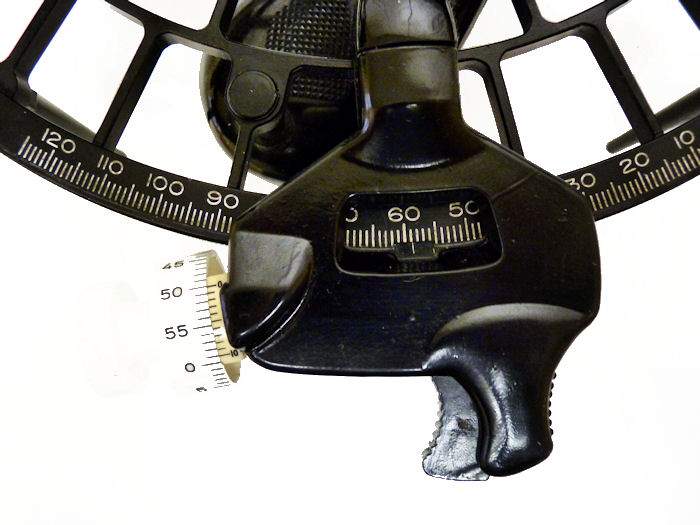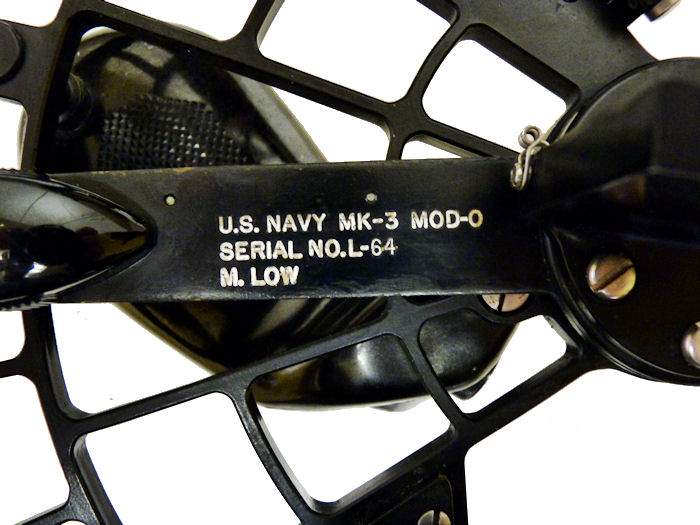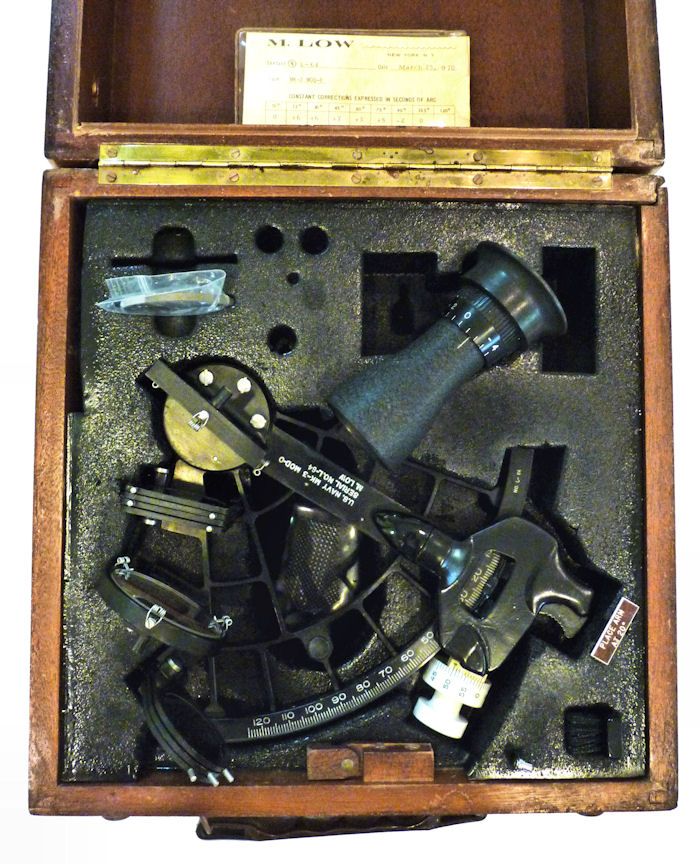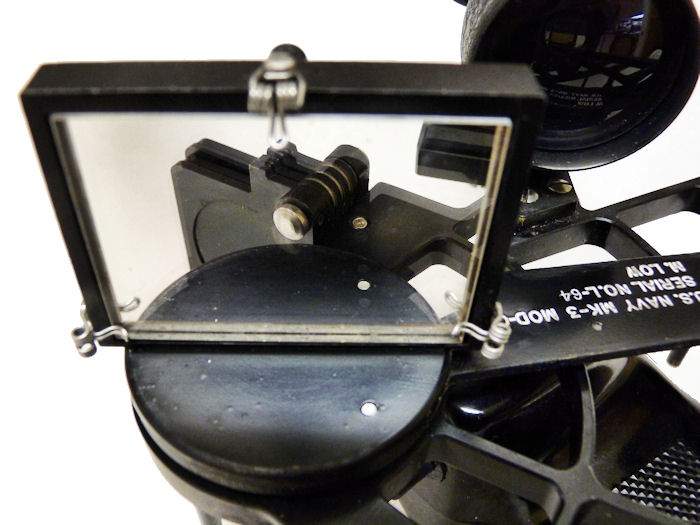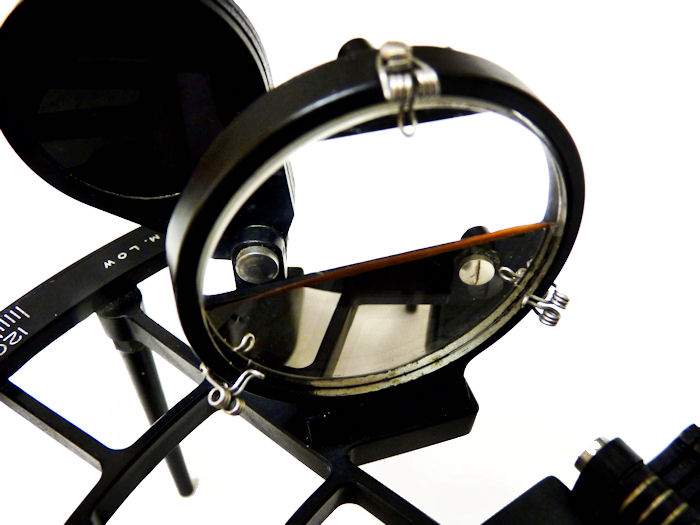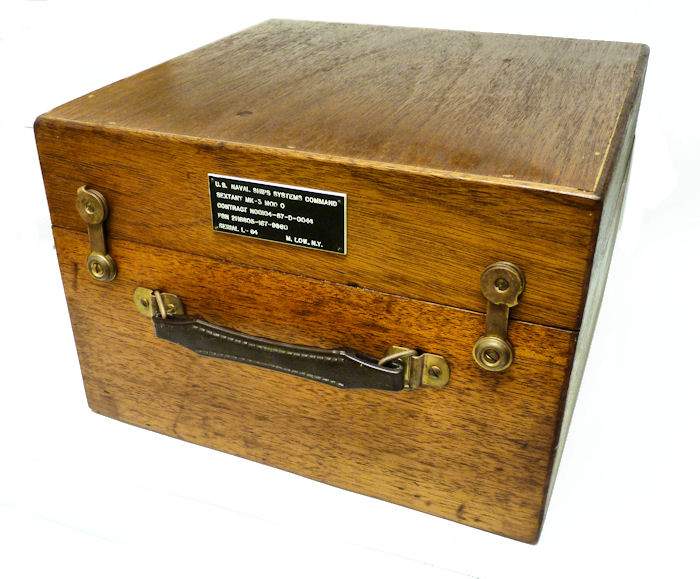Presented is only the fourth Navy MK III that we have offered for sale in eight years. This one was made by M. Low, the original manufacturer of this design. It differs from those made by Scientific Instruments by having the M. Low name engraved on the index arm. Scientific Instruments of Milwaukee, WI riveted a tag on the index arm which lead us to believe SI may have acquired parts from M. Low and used that method to cover the Low name. The sextant comes complete, and fully functional with a working internal light, adjustment wrench, brush and the original inspection certificate dated March/25/70. A copy of the Navy ten page instructons are also included. The low number and the early date may indicate this instrument was made for the Navy’s evaluation. 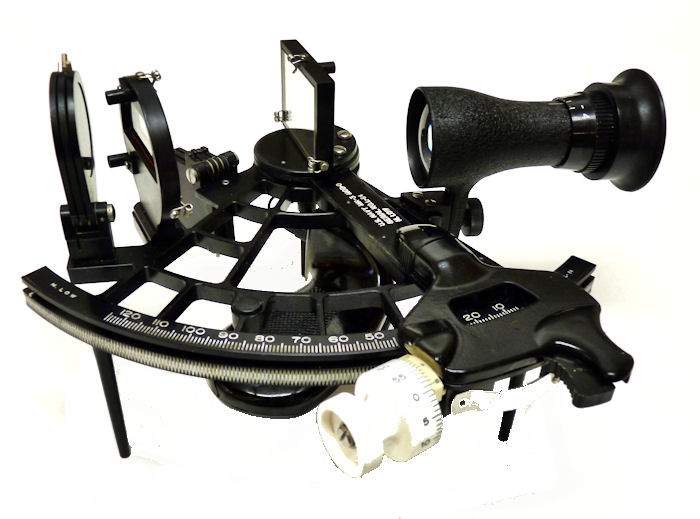 SOME BACKGROUND: At the time the design of this sextant was formally adopted around 1975, I was a member of the Navy Department’s Navigation Symposium, and remember the criteria that was established for a new sextant. They coincided with already existing technology in the civilian maritime community. In total, the new design was far advanced from the ubiquitous Navy WW II standby, the Navy MK II which was long out-of-date.
|
In 1962 C. Plath was acquired by Litton Industries, a large American concern. The C. Plath North American Division was set up in 1978 in College Park near Washington. 1996 saw the introduction of the world’s first fiber-optic solid-state gyrocompass by C.
Plath. The first-ever gyrocompass with no moving parts. Sperry Marine was formed in 1997 with the combination of C.Plath,
Decca Marine and Sperry Marine with more organizational changes yet to come. After 163 years, C.Plath changes its name to
Sperry Marine in May 2000. In 2001 Sperry Marine becomes part of the Northrop Grumman Corporation.
 QUALIFICATIONS: We are one of the few company’s still selling navigation instruments that know anything about them. For purposes of judging whether Joel’s opinion counts, he was the editor of the chapter on sextants of the 1977 Edition of “Bowditch”, The American Practical Navigator, NAVPUB 9; a member of the U.S. Naval Academy Navigation Symposium, 1975 -1978; the author of a book on marine sextants, Cornell Maritime Press,1975, and the founding president of Nautech Maritime Corporation which partnered with Tamaya of Japan in the introduction of the MS 733 Spica, the MS 833, Jupiter, MS 933 Venus sextants and the famous NC-2 navigation computer,
QUALIFICATIONS: We are one of the few company’s still selling navigation instruments that know anything about them. For purposes of judging whether Joel’s opinion counts, he was the editor of the chapter on sextants of the 1977 Edition of “Bowditch”, The American Practical Navigator, NAVPUB 9; a member of the U.S. Naval Academy Navigation Symposium, 1975 -1978; the author of a book on marine sextants, Cornell Maritime Press,1975, and the founding president of Nautech Maritime Corporation which partnered with Tamaya of Japan in the introduction of the MS 733 Spica, the MS 833, Jupiter, MS 933 Venus sextants and the famous NC-2 navigation computer,
in the U.S. market. Joel is a retired Master Upon Oceans, and held a U.S. Navy “D” Qualification as, Senior Skipper – Oceans. From 1995 until 2001, he was a Varsity Offshore Sailing Team Coach at the U.S. Naval Academy. Some of his present and past memberships include the: Association of Naval Aviation, Silver Wings, The Tailhook Association, McCampbell’s Aces Squadron, Naval Historical Foundation, Naval Academy Sailing Squadron, and the Naval Order of the United States.
U.S. NAVY MK III SPECIFICATIONS:
Measuring Range: -5 to 125 degrees
Accuracy: Tested to +/- 20 arc seconds
Telescope: 4 x 40 Coated optics
Frame: Aluminum with black
enamel paint and white numbers.
Micrometer Drum and Vernier Scale: reads to 6 arc seconds
Index Mirror: 57 x 42 mm
Horizon Mirror: 57mm diameter
Shades:
3 for index mirror
3 for horizon mirror
Illumination: YesWeight sextant: 3 lbs 9 1/2 oz, Weight case in case 12 lbs.
INCLUDED ARE:
1 Sextant frame
1 4 x 40 Scope
1 Mirror adjustment tool
1 Brush
Mahogany sextant case. No locks
1 Certificate dated 1970
1 Copy of Navy’s instructions as to use
